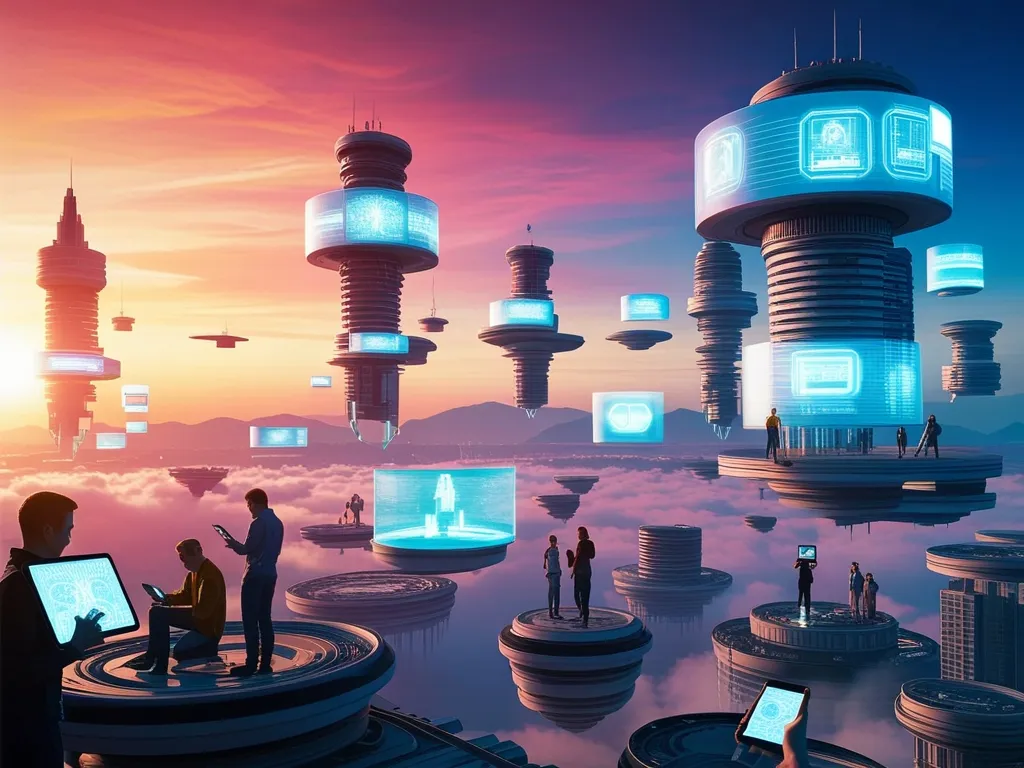Imagine a world where your imagination is not just a passive daydream, but an active tool for shaping your future. This is the realm of imagination engineering, a process that transforms creative visualization into tangible reality. It’s about harnessing the full potential of your mind to design and build the future you envision.
The Science Behind Imagination
To understand how imagination can be a powerful engineering tool, we need to delve into the neuroscience behind it. Research has shown that imagination and memory are closely linked, both residing in the hippocampus, a region of the brain that acts as a simulator for future scenarios. This means that when you imagine a future, your brain is not just dreaming; it’s actively creating mental maps and simulating different outcomes based on your past experiences.
This process is akin to how place cells in the hippocampus help a rat navigate a maze. Similarly, our brains use these mechanisms to explore the labyrinth of future possibilities, guiding our decisions and actions. This creative prowess of the brain allows us to construct new realities from past experiences, making imagination a fundamental function in designing our future.
Applying Imagination in Various Fields
Imagination is not limited to artistic endeavors; it is a crucial component in various professional fields. In engineering, for instance, imagination is the cornerstone of innovation. Engineers at companies like Siemens use their imagination to solve complex problems and create new technologies that make life easier and more efficient. They envision new ways to improve energy production, mobility, and healthcare, turning these visions into reality through meticulous planning and execution.
In the realm of 3D modeling, imagination blurs the lines between fantasy and reality. This technology has revolutionized industries such as entertainment, manufacturing, and healthcare by allowing creators to bring their imaginative designs to life. From designing realistic environments in movies to creating personalized prosthetics, 3D modeling is a testament to how imagination can drive technological advancements and economic growth.
Speculative Design: A Future-Oriented Approach
Speculative design is another area where imagination plays a pivotal role. This approach involves materializing fragments of possible futures through design, encouraging us to think about alternative scenarios and discuss which direction we should take. It’s not about solving immediate problems but about probing the possibilities of future technologies and their impact on society.
For example, speculative designers might create fictional objects that interact with advanced robots, prompting questions about how such interactions could shape human values and societal norms. This method encourages a transdisciplinary approach, gathering insights from design, architecture, technology, and even political science to imagine and discuss complex socio-technical futures.
Personal and Professional Applications
So, how can you apply this concept of imagination engineering in your personal and professional life? Start by reflecting on your past experiences and using them as building blocks for your future projections. This is not just about reminiscing; it’s about leveraging those experiences to make informed predictions and decisions.
For instance, if you’re planning a new business venture, use your imagination to simulate different scenarios. Visualize the market, the competition, and the potential outcomes of various strategies. This process helps you prepare for different futures and make proactive decisions that align with your goals.
The Role of Creativity and Analytical Thinking
Imagination engineering is not just about creative visualization; it also requires analytical thinking. By engaging both sides of your brain, you can turn your visionary ideas into actionable blueprints. This involves breaking down your imaginative scenarios into manageable steps and evaluating each step with a critical eye.
In the metaverse, for example, designers like Lilli T. from Meta’s Reality Labs are using their imagination to build inclusive futures. They combine art, machine learning, and computer graphics to create tools that empower people to express themselves in new ways. This work is highly integrated and cross-functional, requiring collaboration between hardware, software, research science, and design teams to bring these imaginative concepts to life.
Turning Dreams into Reality
The journey from imagination to reality is often complex and demanding, but it is also incredibly rewarding. It involves taking your imaginative ideas and translating them into tangible steps. This could mean designing prototypes, testing hypotheses, and iterating based on feedback.
For engineers and designers, this process is about turning dreams into reality. It’s about using technology to solve real-world problems and create better services. As Hayao Miyazaki once said, “Engineers turn dreams into reality,” highlighting the transformative power of imagination in engineering and design.
Empowering Creativity
One of the most significant aspects of imagination engineering is its ability to empower creativity. By nurturing novel innovations and giving them the time to develop, you can create an environment where creative people can thrive. This is particularly important in fields like the metaverse, where the goal is to empower diverse voices and perspectives.
In this context, imagination is not just a tool for personal or professional growth; it’s a way to build a more inclusive and creative future. It’s about creating tools that allow people to express themselves in entirely new ways, fostering a world where creativity knows no bounds.
Conclusion
Imagination engineering is more than just a fancy term; it’s a practical approach to designing and building the future. By harnessing the power of your imagination, you can turn visionary ideas into actionable plans. This involves leveraging your past experiences, combining creative and analytical thinking, and collaborating across disciplines.
As you embark on this imaginative journey, remember that the future is not something that happens to you; it’s something you actively create. Your brain, with its incredible ability to simulate and visualize, is the most powerful tool you have in this process. So, let your imagination run wild, and watch as your dreams transform into tangible realities. The future is yours to design, and with imagination engineering, the possibilities are endless.






